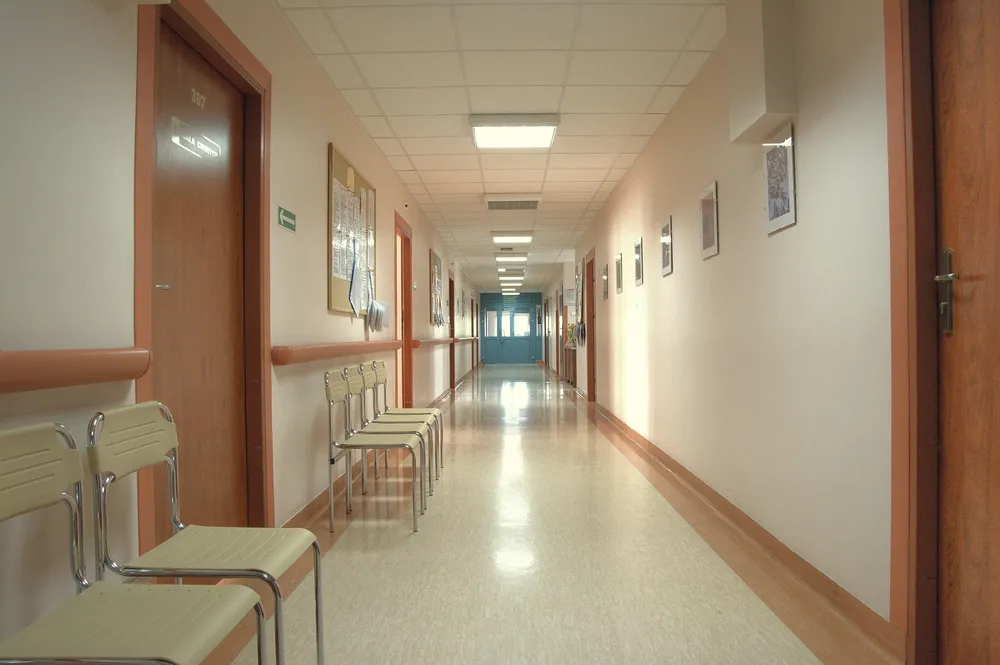Measles Will Likely Arrive in Wisconsin
Wisconsin's vaccination rate has declined and every neighboring state has seen cases.
Wisconsin’s rate for vaccinating 5- and 6-year-olds against measles, mumps and rubella (MMR) has continued to slide since the COVID-19 pandemic began, with 74.1% of such children receiving two doses of the shot in 2024 — down from 79.3% in 2019.
Nearly every Wisconsin county last year vaccinated a lower share of kindergarten-aged children for MMR than before the pandemic. Menominee County, home to the Menominee Indian tribe of Wisconsin, was the lone exception, according to Wisconsin Department of Health Services data.
That success was due to local health officials “being proactive” and conducting outreach that included “looking up kids that were behind, reaching out to parents and encouraging them to bring them in,” said Faye Dodge, director of community health nursing services at the Menominee Tribal Clinic.
Vaccination rates matter because measles is highly contagious and potentially dangerous.
Before the 1960s, hundreds of thousands of Americans faced measles infections each year. The advent of vaccination eliminated the disease in the United States by 2000. But outbreaks have returned to some U.S. communities as trust in vaccines wanes in many communities.
The U.S. Centers for Disease Control though June 19 confirmed more than 1,200 measles cases this year in 36 states, including every state bordering Wisconsin. About 12% of cases sent patients to the hospital. Three people have died.
Wisconsin, which has some of the nation’s lowest vaccination rates for children, has been lucky to have dodged cases so far, said Margaret Hennessy, a pediatrician and member of the Wisconsin Council on Immunization Practices.
Wisconsin’s risk of outbreaks will grow as families with children travel over the summer.
“They’re going to be traveling all over the country,” Hennessy said. “Realistically, it’s likely a matter of time for somebody who’s not vaccinated or doesn’t have immunity to get the disease.”
Wisconsin Watch analyzed statewide vaccination data for 5- and 6-year-olds in the state, conducted other research and spoke to public health officials.
Here are some takeaways:
- The COVID-19 pandemic disrupted local vaccination programs, leaving children behind in their vaccination schedules. Understaffed, under-resourced counties have struggled to catch up.
- Creating relationships with trusted community members and reducing access barriers is the most effective way to inoculate more children against contagious diseases like measles, public health officials say.
- No Wisconsin county comes close to reaching the vaccination rate of 95% that is considered the benchmark for herd immunity protection. That was true in 2024 and before the pandemic.
- Just three counties — Manitowoc, Marathon and Kewaunee — fully vaccinated at least 80% of kindergarten-aged children in every year from 2019 to 2024.
- While vaccination rates are lagging from pre-pandemic levels in most counties, 28 of Wisconsin’s 72 counties reported vaccination gains between 2023 and 2024 — four more than the previous year. Still, the majority of counties saw declines.
Vaccination rates are plunging in Clark County, which consistently ranks lowest statewide for vaccinating 5- and 6-year-olds against measles. Just 42.9% of those children received both MMR doses in 2024, down from 57.9% in 2019.
Brittany Mews, Clark County’s health officer and director, cites a range of challenges in her sprawling county. Those include distances between few clinics in communities with no public transportation, low levels of health insurance access and diverse populations who face language barriers — and may adhere to cultural norms that prioritize traditional remedies over Western medicine.
Community partnerships in familiar places make people feel more comfortable — particularly in the county’s diverse communities, including those with language and cultural differences.
Clark County is also working to increase vaccine access by partnering with neighboring health departments to offer vaccination clinics six times a year at a church food pantry, creating a “one-stop-shop” system, Mews said.
Forging personal connections can grow trust and spread accurate information at a time when disinformation is running rampant online, Hennessy said. Hearing about positive vaccination experiences from a parent, neighbor or other trusted source can hold more weight than information a physician shares.
“It’s unfortunate that we all can’t be everywhere all the time to fill that,” Hennessy said.
Heather Feest, a Manitowoc County public health nurse manager, said patience and understanding of concerns are also key to increased vaccinations.
“We’re not trying to persuade one way or another, it’s giving that information and answering questions — and allowing them to get factual information and have a conversation without judging,” Feest said. “It’s harder now than what it used to be.”
This article first appeared on Wisconsin Watch and is republished here under a Creative Commons Attribution-NoDerivatives 4.0 International License.![]()
If you think stories like this are important, become a member of Urban Milwaukee and help support real, independent journalism. Plus you get some cool added benefits.























get the vaccine